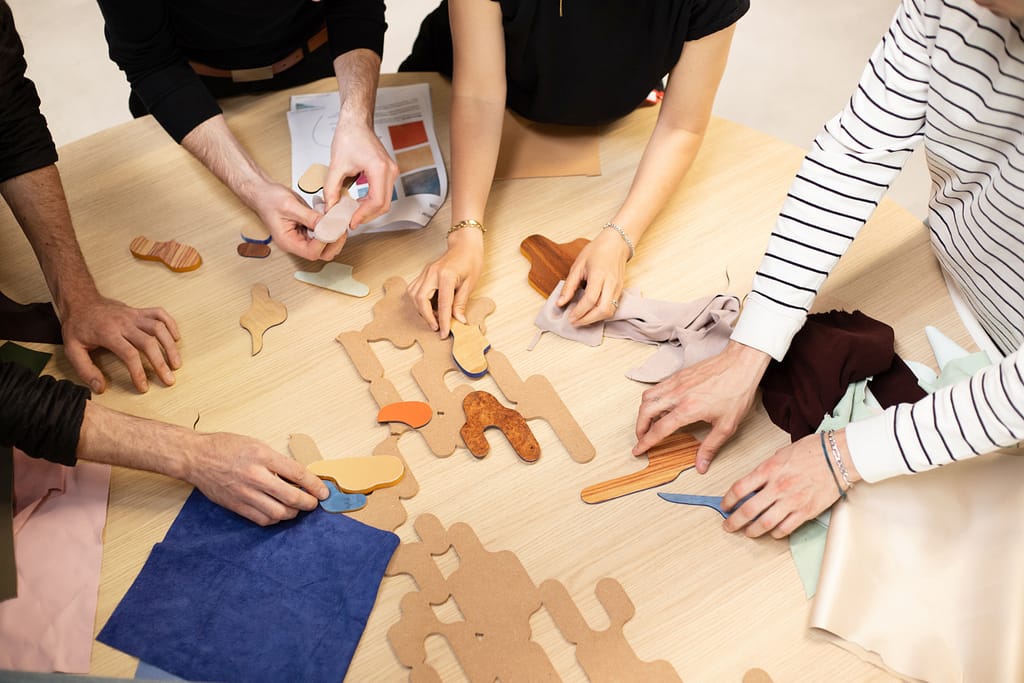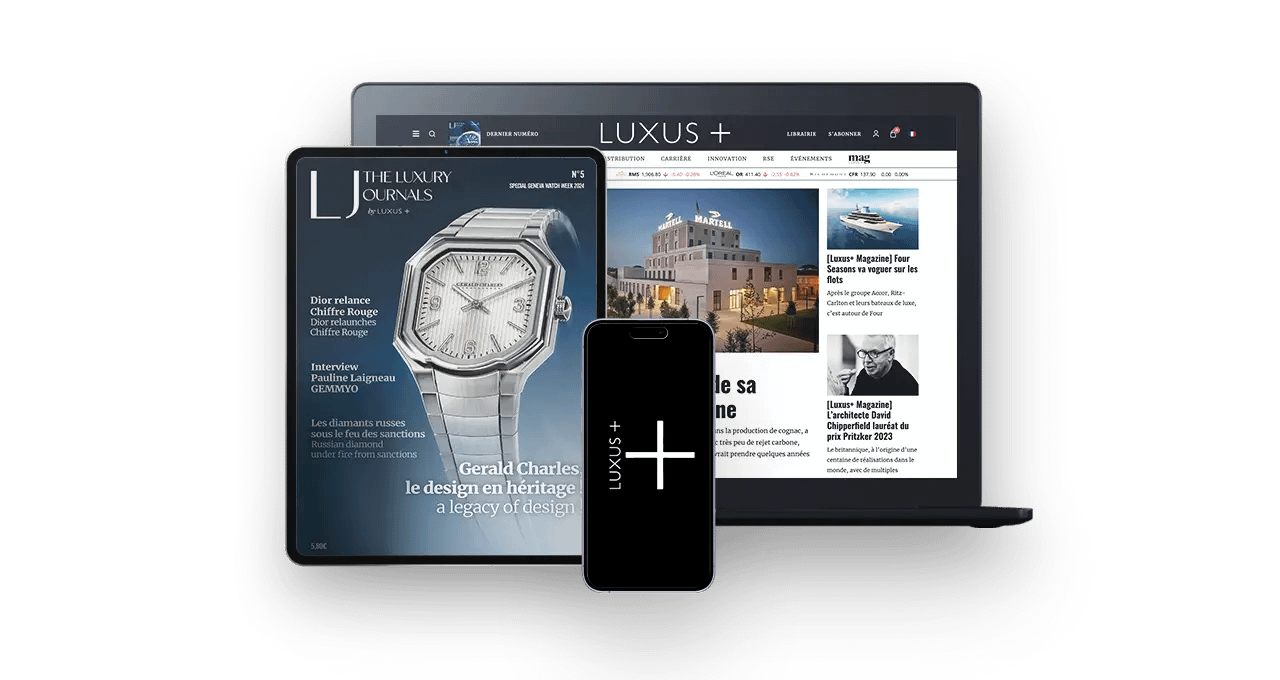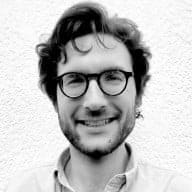Gainerie 91 launches its Genesis movement, promoting the reuse and recycling of industrial waste through a work of art. The Genesis movement is embodied by the monumental work Écorces (Barks in English), the fruit of close collaboration between Gainerie 91 and the movement’s first artist, Johé Bruneau.
A committed artist, Johé Bruneau specializes in the transformation and sublimation of waste materials. In collaboration with Gainerie 91, a leading manufacturer of boxes and display cases for the most prestigious luxury houses, they designed together the monumental work, Écorces, revealed to the public during the Edition Spéciale by Luxe Pack show, on June 4 and 5, 2024 at the Carreau du Temple in Paris.
Before becoming a master in the art of making recycled artworks, Johé Bruneau obtained a diploma as an artisan métier d’art, specializing in the casting and conservation of heritage works. This led him to create sculptures. The use of resins, synthetic materials made from plastic, awakened his ecological awareness and interest in the circular economy. Following in the footsteps of recycled plastic, Johé Bruneau has also turned his attention to other, non-virgin materials in his artistic creations.
At the Edition Spéciale by Luxe Pack trade show, a link was forged between the company and the artist, giving rise to a collaboration based on their shared passion for creativity. The work “Écorces”, the result of this collaboration, draws its inspiration from the symbolism of tree bark, a metaphor for regeneration and rebirth. Made from wood veneer off-cuts and leather scraps from the activities of Gainerie 91, this remarkable piece embodies the very essence of the Genesis movement.
Luxus Plus: I believe you define yourself as a low-tech artist. How would you define this approach?
Johé Bruneau: Following my studies, I joined Dave Hakkens, a Dutch designer, who in 2013 was launching Precious Plastic, a collective offering a range of low-tech machines, coupled with an open-source project.
In my opinion, the low-tech artist complements high-tech: he’s not necessarily looking for something very sophisticated, but on the contrary, proposes a more accessible approach. So, as soon as we had working machines, we chose to share video tutorials on our website to encourage people to reproduce them and appropriate these skills. After starting with a workshop in the Netherlands, Precious Plastic now has almost 2000 workshops worldwide. A snowball effect has led to the deployment of hundreds of structures. The project has become a veritable forum where anyone can find the information they need to democratize recycling on a local scale. To sum up, I’d say that Low Tech resonates with the concept of resilience, where each project involves a manufacturing process based on locally available resources.
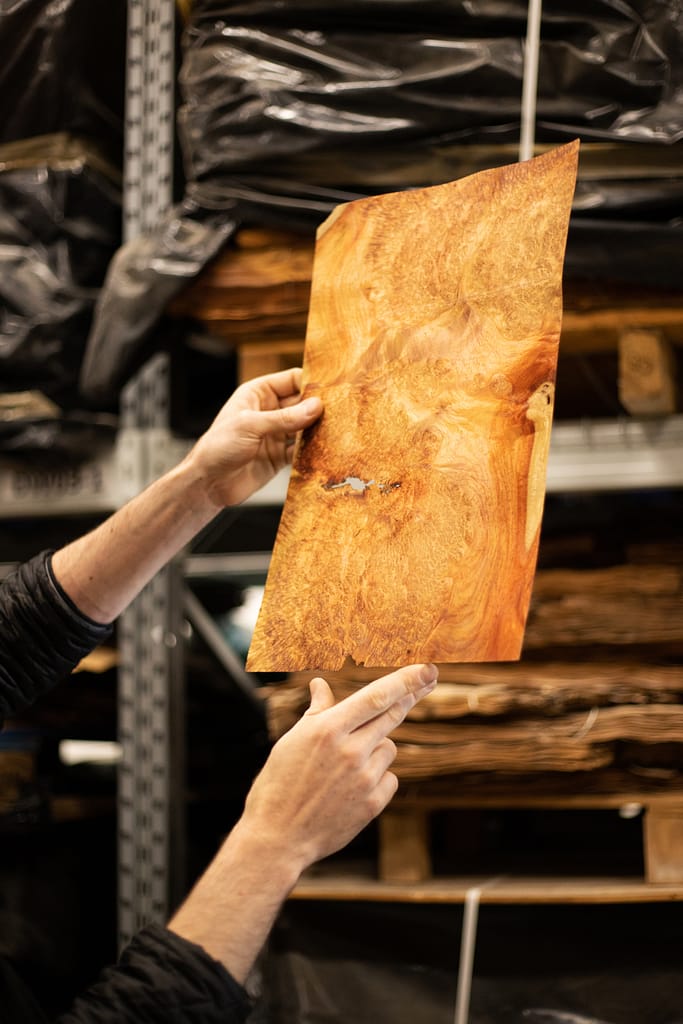
L+: How do you select and find the materials you’re going to reuse in one of your works?
Johé Bruneau: My search for materials begins mainly with Emmaüs. Today, I work with a workshop located 30 km from my home, which centralizes all end-of-life objects from the six Emmaüs in the Auvergne-Rhône-Alpes region. The price is indeed higher than with other suppliers, but the extra cost gives me a double advantage: I get plastic that has been sorted and shredded beforehand, and I help finance a number of professionals whose social context seems relevant to me. I’m also driven by the notion of eco-design, i.e. whenever a project involves the use of accessible resources or waste materials.
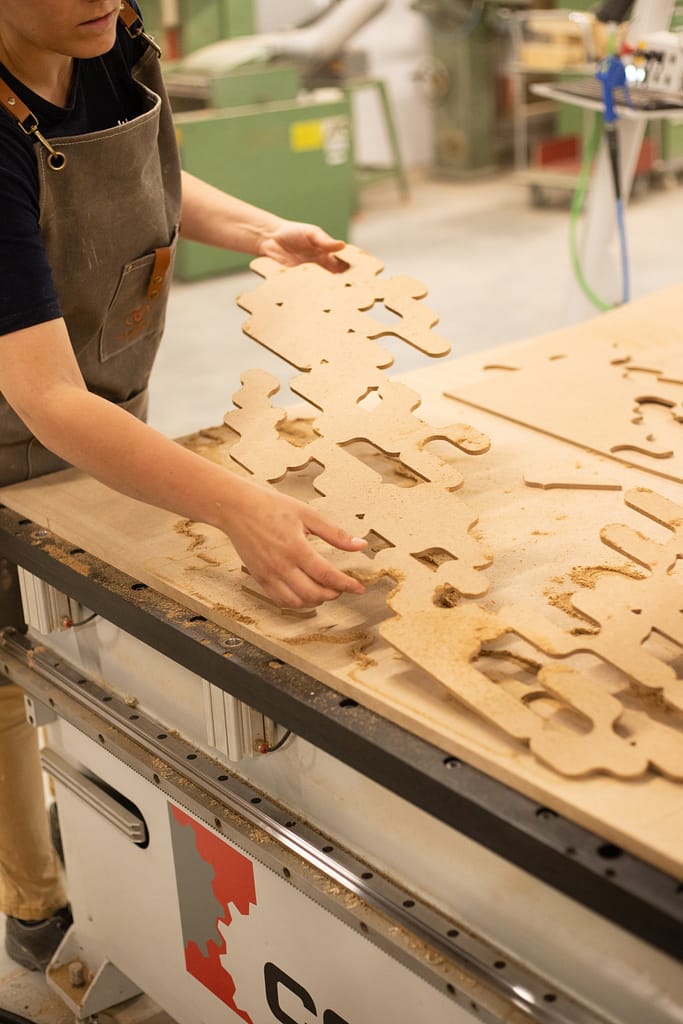
L+: We’ve seen that the notions of democratization and eco-design are central to your work. How would you describe your creative process? What are the selection criteria for your collaborations?
Johé Bruneau: Everything starts with the medium, which brings meaning to the project. Then, more generally, and like my collaboration with Gainerie 91, the project may emanate from a customer request and its history. In this case, I try to familiarize myself with the customer and his desires. In this case, the question of the medium then arises, and ultimately that of the techniques used to create it. In my opinion, it’s this language that best expresses my work as a craftsman.
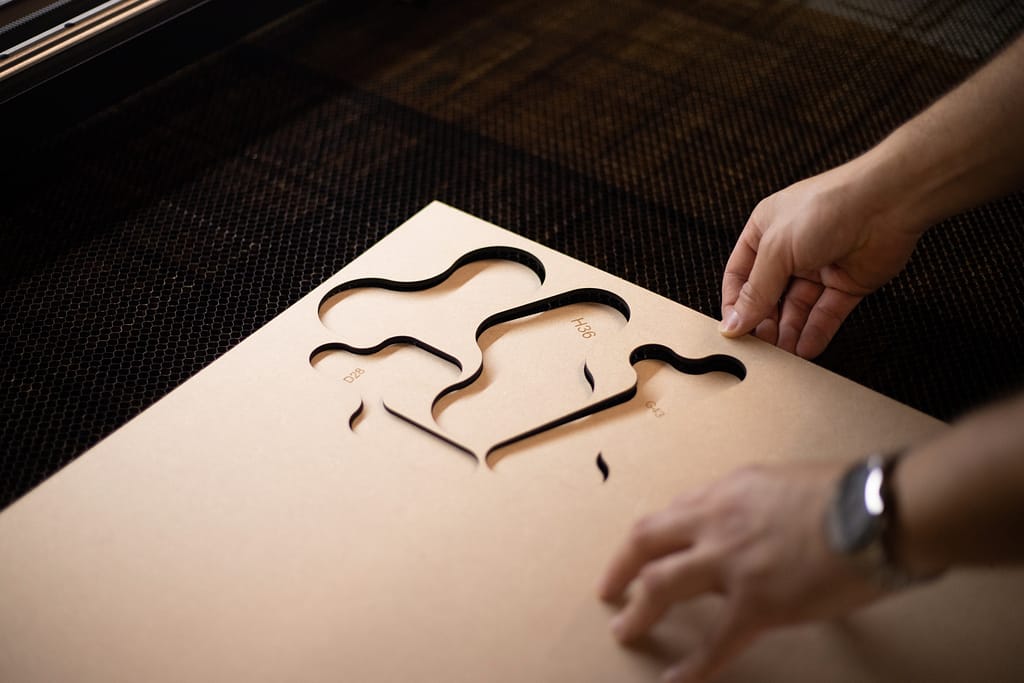
L+: How is your collaboration with Gainerie 91 structured?
Johé Bruneau: Before being confronted with the challenges of the circular economy, Gainerie 91 is first and foremost a company with a 50-year history. It has always manufactured pouches and cases for the great names in luxury. Although the company began by designing its packaging using wood veneers (marquetry), it gradually turned to the technique of glued leather. Today, however, the question arises of what to do with the offcuts this production can generate, as much as the redoubled attention to new materials.
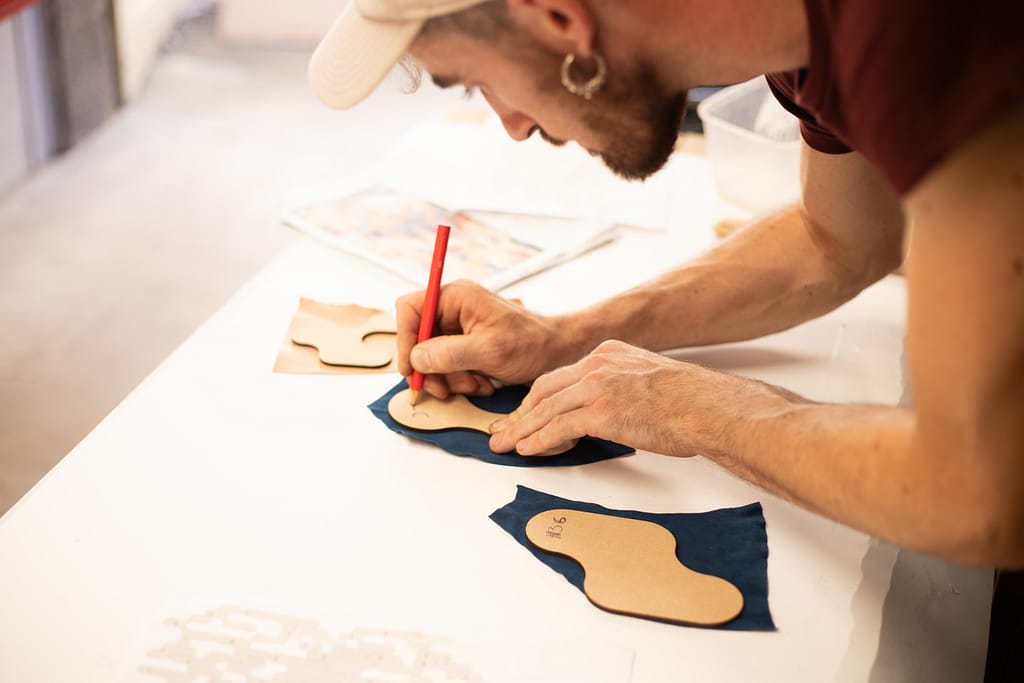
L+: Tell me about this “Écorces” project that you’ll be exhibiting to the public as part of Luxe Pack By Edition Spéciale?
Johé Bruneau: The bark theme perfectly captures the history and craft of Gainerie 91 and its work with leather. It also conveys the notion of a protective envelope that characterizes Gainerie 91’s finished work. Added to this is a temporal dimension, with materials that are renewed over the years, and a desire to think in successive layers, like a tree growing, year after year. The work was conceived entirely from production offcuts and end-of-stock items. Composed exclusively of 300 small fragments of material, this large composition measuring 3 metres by 1.50 metres was a real technical challenge. I saw it as an opportunity to showcase the full diversity of these materials, i.e. some fifteen different woods and leathers. To achieve this, I borrowed from marquetry techniques (gluing leather, veneering wood, etc.) as well as from the concept of mosaics, to create an enormous whole from small fragments. There’s also a more modern dimension, insofar as all the studies were carried out using 3D modeling. This technique enabled me to see how the colors of the different types of wood and leather would interact with each other. Last but not least, Gainerie 91 was proactive on the project: they gave me access to their machines, which enabled me to use cutting-edge processes such as digital milling and laser cutting.
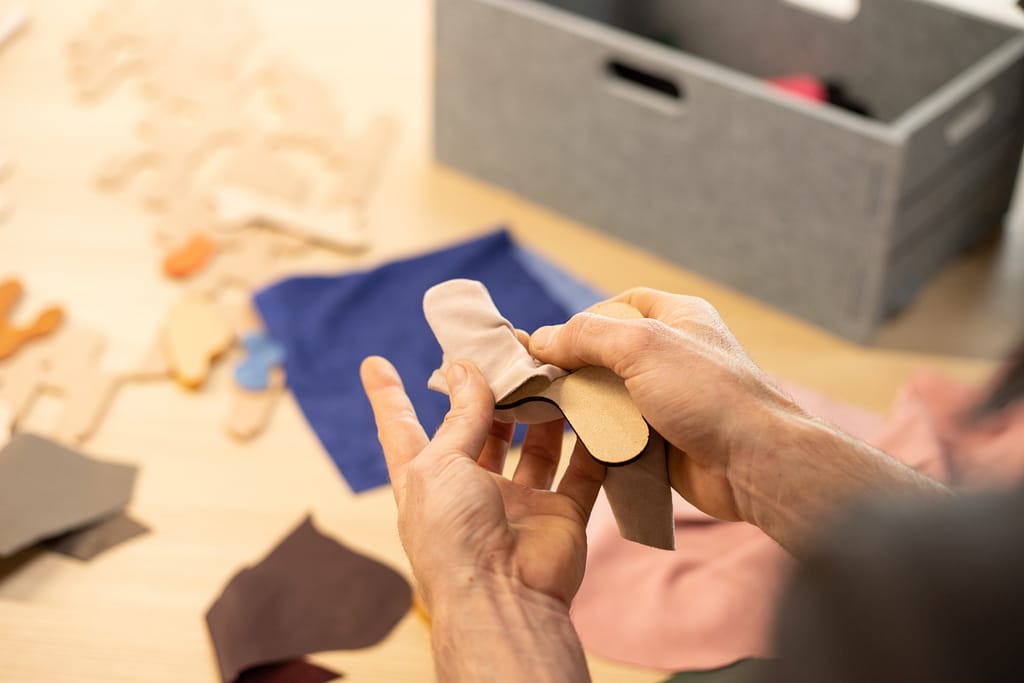
L+: How does this project fit in with your achievements in the luxury goods sector? Do you consider this sector to be at the cutting edge of environmental issues?
Johé Bruneau: As with Ruinart, for whom I created a fruit basket using cork stoppers, I’d say we’re back to this notion of upcycling. Today’s luxury goods industry remains the guarantor of the preservation of fine craftsmanship. When we look back at the history of luxury, we always see excellence in know-how, mastery of materials in a variety of mediums, and high standards of quality not necessarily found elsewhere. And then there’s the notion of avant-garde. The Ruinart project is anchored in a program involving several artists. Through craftsmanship, the House wanted to question all the waste that could be generated by champagne consumption. We were all given carte blanche to create from the waste products of this activity, namely glass bottles, corks and wooden boxes. For me, this avant-garde approach means that we can anticipate the challenges of tomorrow, while at the same time guaranteeing the heritage and authenticity of these traditional skills. And to open them up to our contemporaries and future generations. These two key elements confirm my desire to pursue this type of meaningful collaboration.
All the more so as luxury is a prescriptive force in new uses: all it takes is for a brand to position itself on a new commitment for a cultural trickle-down phenomenon and economic spin-off to emerge. I think that today, luxury brands that are aware of this power and dare to take risks, like Gainerie 91 or Ruinart, can help change the course of things.
L+: With its Écorces project, Gainerie 91 wants to launch its movement for young people. How important is the latter in terms of passing on your work and your work in general?
Johé Bruneau: The program launched by Gainerie 91 is destined to continue. For me, Écorces is much more than a work of art: it’s a manifesto that will truly embody all these values of questioning the ways in which offcuts are produced and recycled. For Gainerie 91, it’s really a question of continuous experimentation and gaining expertise in eco-design and the circular economy, so as to be able to reintegrate them into tomorrow’s serial production.
L+: What is your relationship with young people, and what responsibility do you feel as an artist towards the ecological transition?
Johé Bruneau: As with any content creator or artist in the broadest sense, there is indeed this responsibility to ask the right questions with poetry and elegance, but also to talk about today’s world, the concrete issues at stake, and to help formulate answers. I often speak at design and secondary schools. This makes it clear that the new generation has grown up with these environmental issues, for better or for worse. The difference lies in the fact that what may have taken my generation and previous generations a little time to grasp, is now almost taken for granted in the new generation.
As well as inspiring them, we need to support them, not so much from a creative as from a technical point of view. For me, this awareness also involves transmission, as in my recent role as a jury member at Olivier de Serres, the École des Arts Appliqués et des Métiers d’Art in Paris. While many things are going digital, as a craftsman, I’m still very attached to the material and to this manual fabrication.
L+: In your opinion, is art well placed to raise awareness of the environmental cause?
Johé Bruneau: It’s not a new idea. I’m thinking in particular of Eva Jospin, who has been doing great work for years with grey cardboard packaging. Where art is a fundamental lever is in its ability to convince through the quality of its productions. It’s a challenge I set myself, whatever the medium, whether it’s scraps of leather, corks or recycled plastic. I don’t want to come up with something expected or too simplistic, but really create that wow effect. For me, a work is successful when it inspires and unites. After that, artistic mediums are so vast and varied that they can talk about so many different things. In my opinion, not all artists are necessarily ecologists in the way they express themselves, but it’s still a strong and relevant means of expression for talking about ecology.
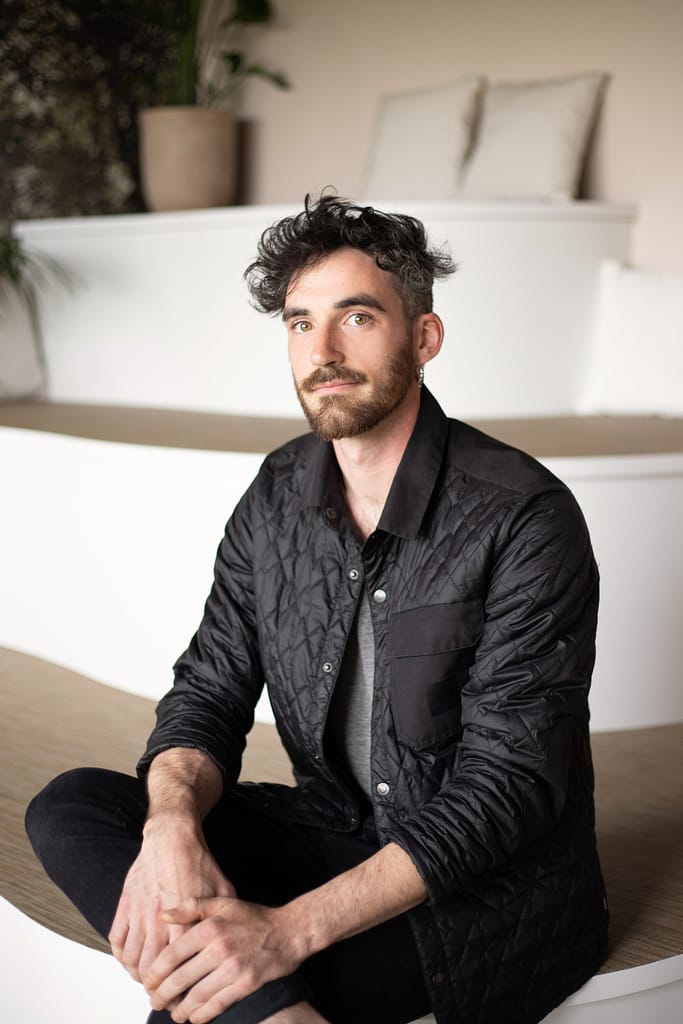
“Ecorces”, l’oeuvre de Johé Bruneau pour Gainerie 91, est exposé en avant-première au Salon Edition Spéciale by Luxe Pack
Du 4 au 5 juin 2024, au Carreau du Temple
4 Rue Eugène Spuller, 75003 Paris
Read also >
Featured Photo: © Marion Saupin/Gainerie 91



























